Slave labor, expropriation and environmental degradation: a visceral connection
By Carolina Motoki and Ginno Perez
Land grabbing, deforestation, and timber looting are all intimately related to the practice of a grave human rights violation: the contemporary slave labor. In Brazil, slave labor is a crime, as defined by article 149 of the Penal Code, when a worker is subjected to forced labor, degrading labor conditions, debt bondage, or exhaustive workdays. Slavery dehumanizes, turns the person into an object, and violates two essential rights: freedom and dignity.
In Brazil, slave labor is directly related to environmental destruction and land conflicts. Historically, workers have been enslaved during the deforestation process to open new farmlands, many of them on land grabbed in the course of capitalist expansion into the agricultural frontier. Deforestation is the most visible part of the problem.
There is, however, strong evidence that slave labor is being systematically used for selective logging. Despite cutting down only high-value trees, this process causes forest degradation, although this is not so visible in satellite images. In this case, forest management plans – approved in agrarian reform settlements or in public forest concessions – are often used to give a “legal” appearance to illegally logged wood from protected areas, such as conservation units and indigenous lands. This pillage of timber is also carried out with the exploitation of enslaved workers. Since these cases are rarely detected by law enforcement, they mostly go unnoticed.
Slave labor is used to inflict environmental damage
In the last ten years, from 2011 to 2020, 465 people were rescued from slavery in deforestation activities, as a result of 42 labor enforcement operations in states in the Amazon, Cerrado, and Pantanal regions.[1] Yet this is only the visible part of the problem, since many work fronts are never even visited by inspectors. There is no data to certify if these cases actually involve illegal deforestation[2], since there are no joint actions between labor and environmental enforcement authorities.
There is some evidence, however, that the two crimes often overlap. In 2015, Operation “Clean Lumber” (Madeira Limpa)[3], launched by the Federal Prosecutors’ Office (MPF) and the Federal Police (PF), arrested 21 people in western Pará state (Amazon region) for deforestation, illegal selective logging and land grabbing. The suspects were coercing rural communities to authorize the removal of trees from their lands, which belong to agrarian reform settlements. Some of them were on the “dirty list” of employers caught using slave-like labor. The list is published by the Department of Labor Inspection (SIT), now under the Ministry of Economy.
One of them was the Iller sawmill[4], which supplied wood to Tramontina, a famous Brazilian brand of household utensils. During the 2015 operation, Iller’s owners were arrested, and the sawmill was fined R$1.8 million for storing wood without proving its legal origin, and for submitting false information to the official forest control systems. Three years earlier, in 2012, the same sawmill had been caught enslaving 31 workers in Santarém, Pará.
There were no living quarters: the workers slept in canvas and straw shacks, exposed to the risks of the forest. The food was prepared on the dirt floor and outdoors, in fire pits, without minimal hygienic conditions of storage. There were also no bathrooms on the site, nor potable water: it was taken from a stream to be stored in a reused motor oil drum. There was no personal protective equipment, even though there was a high risk of accidents. The workers were paid per tree felled, with no working contracts. Many of them were paid below the minimum wage.
Notes
Data on inspections systematized by the Pastoral Land Commission (CPT) / “Look Out So You Won’t Become a Slave” Campaign.
The limits between legal and illegal deforestation are often blurred, when we consider that authorities have favored legalization in various ways, such as more flexible laws, frequent amnesties, and even authorizations to cut down vegetation on illegally occupied public lands. In other words, even some “legal” deforestation may actually have been legalized under a mantle of irregularities.
Read more in this Dossier: A President and a Parliament serving land grabbers through lawmaking and deregulation.
Caso Madeira Limpa: MPF/PA denuncia 30 acusados à Justiça. MPF, 21/09/2015.
According to research by the NGO Repórter Brasil: Tramontina comprou madeira de serraria flagrada com trabalho escravo. Repórter Brasil, March 13, 2017.
Looting of timber and slave labor go hand in hand
The situation at the Iller sawmill is part of a recurring pattern, especially in western Pará. Research done in 2016 by the Integrated Action Network to Fight Slavery (Raice), of the Pastoral Land Commission[5], indicated that selective logging – which targets valuable trees and does not leave deforestation spots detectable by satellite – is practiced in conservation units and indigenous lands by exploiting enslaved workers. To create an air of legality, the wood is laundered with legal paperwork from nearby settlements’ forest management plans.
The loggers, to this end, take over allotments in land reform settlements – another way to grab public areas through the reconcentration of lots – and make the people from these communities heavily dependent on them, either through violence and threats, or by providing improvements of state responsibility, like building roads and other benefits. This sets up a mafia. Since the National Institute for Colonization and Agrarian Reform (Incra) has abandoned many areas, settlers also end up having to work for the loggers, sometimes in slavery-like conditions.
In 2016, five people were rescued from slave labor in Uruará, Pará. They were working for the M. A. de Sousa Sawmill[6] on federal land embargoed by the courts, an example of how environmental and labor crimes are closely connected to land-tenure crimes. On the same occasion, the inspectors reached an empty workers’ camp in the Cachoeira Seca Indigenous Land. As soon as it became known that inspectors were in the region, the camp had been abandoned.
Notes
Carmen Bascarán Center to Defend Life and Human Rights – CDVDH/CB; Comissão Pastoral da Terra (CPT). Por debaixo da floresta: Amazônia paraense saqueada com trabalho escravo. São Paulo: Urutu-Branco, 2017.
Trabalho escravo na Amazônia: homens cortam árvores sob risco e ameaça. Repórter Brasil, March 13, 2017.
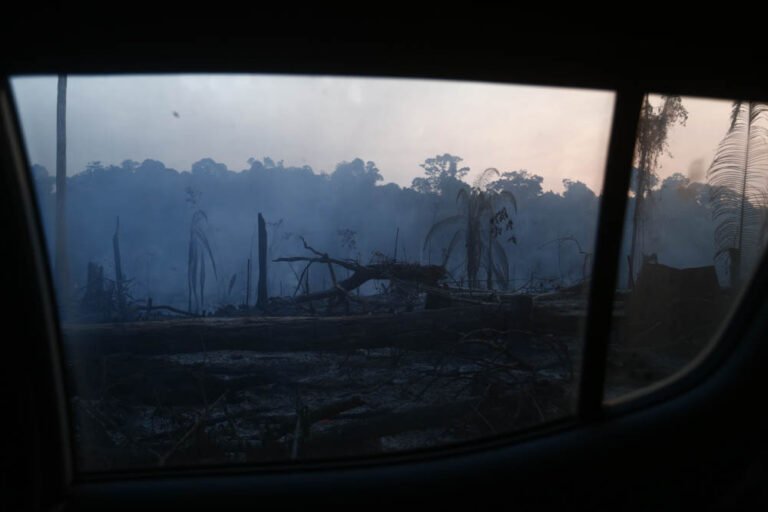
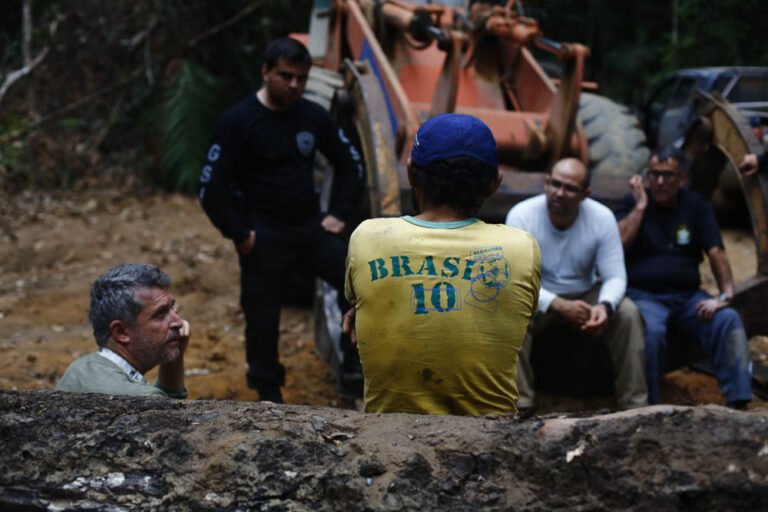
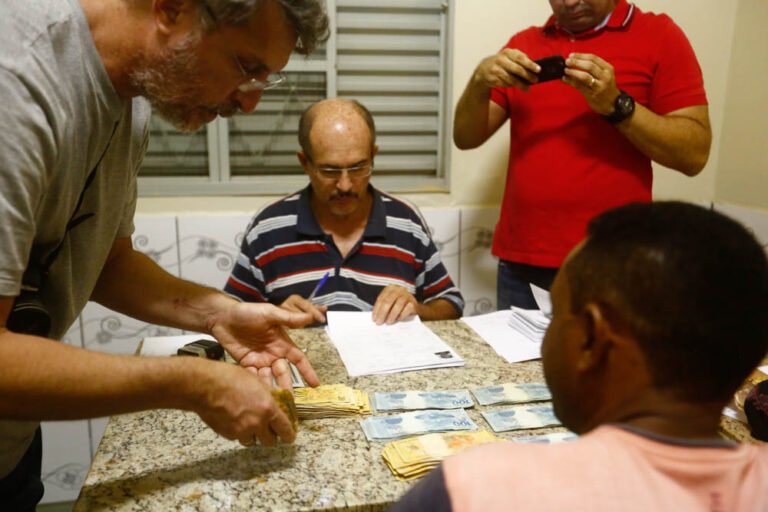

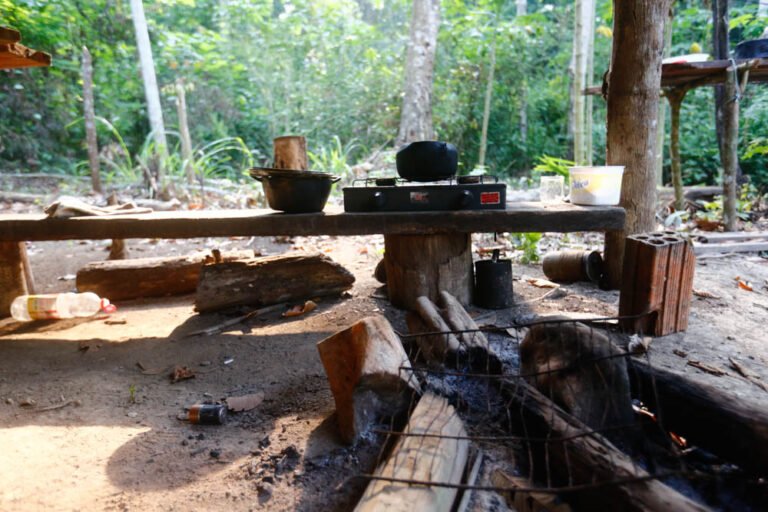
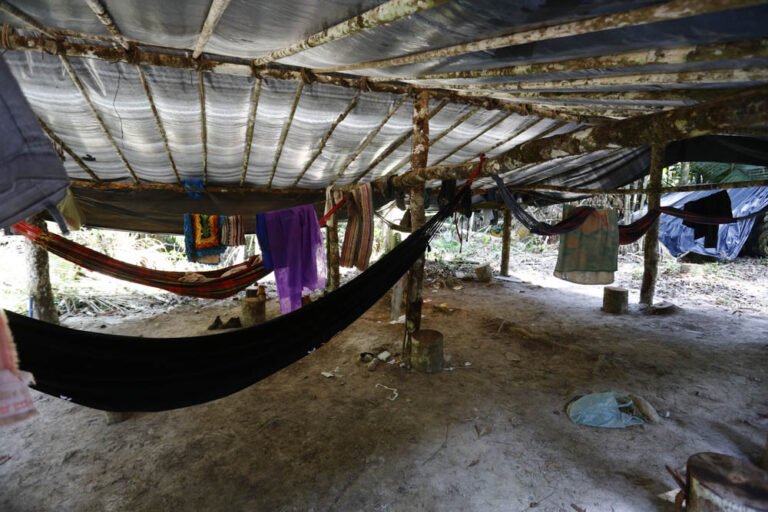

Cattle ranching, the activity that enslaves the most, is also connected to these crimes
Ever since the Special Mobile Inspection Group was set up in 1995 to inspect and fine employers caught using slave labor, more than half of the cases they found were related to cattle ranching. In these cases, more than 17,000 workers were rescued from enslavement. It is significant that most of the forests are cleared to plant pastures for livestock, which is still the main vector of deforestation.
As Brazil is now the world’s largest beef exporter, labor and environmental abuses committed in the pastures are linked to global markets. The main meat processing companies, such as JBS – owner of the Friboi, Seara and Swift brands – and Minerva, buy cattle produced by farms caught using slave-like labor.[7] JBS, Minerva and others are also accused of buying cattle from illegally deforested areas by the Federal Public Prosecutor’s Office, by Ibama and by NGOs that track production chains.[8]
The use of intermediaries and the re-rearing and fattening system – which transfers cattle between different ranches before shipping them to the slaughterhouses – makes corporate traceability difficult, for both labor and environmental concerns.
In the last ten years, between 2011 and 2020, 2,304 workers were rescued on cattle ranches during 392 inspections, in the Amazon, Cerrado, and Pantanal regions alone. In some cases, deforestation is performed inside these properties. Once again, labor and environmental inspectors do not coordinate with each other, and the lack of cross-referenced data and information makes it difficult to point out concrete situations in which enslaved workers were used to carry out illegal deforestation, which may give the impression that the two crimes are not connected.
One example was the Umuarama ranch, in Aliança do Tocantins. In 2016, the ranch was caught using slave labor. In 2018, the same ranch was fined by Naturatins, the local environmental inspection agency, for deforesting 60 hectares of Cerrado vegetation from its legal reserve.[9]
Notes
See the report “Trabalho escravo na indústria da carne”, published in January 2021 by the NGO Repórter Brasil.
See the report “Carne bovina, bancos e a Amazônia brasileira”, issued in December 2020 by Global Witness.
According to the report on the inspection carried out from Feb. 3-25, 2016, and the official letter 069/2018/GEGUR/Naturatins, dated Dec. 14, 2018.
Land grabbing and the dispossession of peasant communities fuel slave labor
Besides the direct use of slave labor to carry out deforestation and environmental degradation, it is also important to point out the relationship between this type of exploitation and the displacement of peasant communities through land grabbing and large-scale infrastructure projects.
Losing their territories and livelihoods means these people are forced to migrate, searching for work and struggling for their own survival. In many cases, they are pushed towards the outskirts of nearby cities, and end up extremely vulnerable to being recruited for slave labor. They have little choice but to accept more and more precarious jobs, often in degrading conditions, in debt bondage, or even extreme physical violence.
Slave labor, widely used to clear forests and to pillage timber, is nurtured by land concentration, by the abandonment of agrarian reform settlements, and by the invasion of traditional peoples’ territories and their forests. Guaranteeing these communities’ access to land and to their livelihood in their own territories, with dignified lives, is undoubtedly the best way to fight slavery.
Carolina Motoki is a journalist and community educator. She is an advisor for the National Campaign to Prevent and Combat Slave Labor of the Pastoral Land Commission.
Ginno Perez is a cholo geographer and militant researcher. He was a pastoral agent of the National Campaign to Prevent and Combat Slave Labor of the Pastoral Land Commission.
